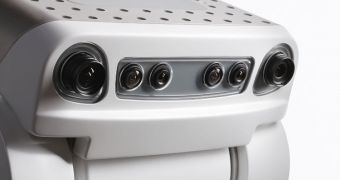For many years, experts have been suggesting that robots be used as personal assistants, especially to people with disabilities. While technological and engineering challenges still remain, that goal is now closer than ever, thanks to recent innovations achieved by various research teams.
Only recently, a man named Henry Evans managed to shave himself for the first time in 10 years. After suffering a stroke that left him mute and partially paralyzed, the man used a robotic assistant for the procedure, a robot that he controlled.
This was not an advancement in medicine, as one may have expected, but one belonging strictly to the field of robotics. The recent achievement shows just how important robots can be as assistants.
But mechanical helpers still need supervision. In Evans' case, a team of engineers were always on stand-by, ready to intervene if something were to go wrong. The goal of studies conducted in the field of robotics is to make the machine autonomous and more capable.
Evans was able to finally perform an action that many of us take for granted using a robot called PR2, which was developed by private research lab Willow Garage. The two-armed machine is installed on a base featuring wheels, which its operator can also control.
Working together with colleagues at the Georgia Institute of Technology (Georgia Tech) Healthcare Robotics Lab, the Willow Garage team developed a special user control interface for Evans to use.
The operator has control over the robot's cameras, hands and motions, and can use the machine to pick up objects from across the room, scratch his face, or even shave himself, as was recently demonstrated.
All commands are sent via head movements, which move a cursor on a computer screen. The operator has a single button, that he or she can use to select a function that was highlighted with the cursor.
“Anytime Henry is left alone, he is unable to do a single thing for himself. We're showing how robots could give back independence to people in that situation,” Willow Garage CEO Steve Cousins says.
At the same time, Evans can not be left alone with the robot either, at this point. “The first time that he wanted to scratch his nose, we were scared. There's a lot more work to do there to get it to a point where he could do things like scratch or shave on his own,” Cousins explains.
In order to improve on the technology, the robot needs to be made more aware of its surroundings. It also needs to handle emergencies and unexpected situations autonomously, given its operators' dependency on it.
Some of the developments needed to achieve this objective are already under development, at Willow Garage and elsewhere, Technology Review reports.

 14 DAY TRIAL //
14 DAY TRIAL //